Exposition en ligne |
Catastrophe de Smyrne-90

Smyrne était un des principaux centres commerciaux et culturels de l'Asie Mineure où les Arméniens s'étaient installés depuis les temps anciens et vivaient dans les quartiers arméniens Getezerk, Karap et Haynots.
Aux 18ème et 19ème siècles la ville est devenue un grand centre culturel arménien. Les livres et les périodiques publiés dans les maisons d'édition de Smyrne avaient un rôle importent dans la vie culturelle et socio- politique des Arméniens. À Smyrne il y avait l’école de fille Mesropyan, fondée en 1799 et celle Hripsimyan, ainsi que plusieurs écoles privées. La communauté arménienne de Smyrne avait quatre églises (l'Eglise de St. Stefan était la plus célèbre) , un hôpital national et un théâtre. Dans la vie économique de Smyrne les commerçants arméniens jouaient un rôle important et ils exportaient des tapis, de cuir ,de laine, des fruits secs. Il avaient des maisons de commerce en Europe, en Russie, en Inde et en Egypte.
Pour son développement multiculturel Smyrne était connu sous le nom de «le petit Paris de l'Orient". Jusqu'en 1922 environ 30.000 Arméniens vivaient à Smyrne.
En Septembre 1922 , l'armée kémaliste a incendié les quartiers arméniens et grecs de Smyrne, en organisant également les massacres de ces peuples. L'incendie prémédité de la ville avait l'intention de terrifier la population chrétienne et de les obliger à quitter la ville pour toujours. Les rues étaient plein de dizaines de milliers de cadavres des Grecs et des Arméniens. Et ceux qui ont essayé en vain de trouver le salut par les navires de guerre anglais, italiens et américains, se sont noyés dans la mer.
Ainsi , la catastrophe de Smyrne était le dernier épisode du génocide arménien et le début de la mise en œuvre de la politique d’Etat des kémalistes "Turquie aux Turcs". Aujourd'hui Smyrne est connu sous le nom de ‘’Smyrne turc’’ et la majorité des habitants sont les Turcs.
En Septembre 2012 au Musée-Institut du Génocide arménien a été ouverte une exposition temporaire avec les originales photographies uniques et des vidéos de l’incendie de Smyrne. Le même jour s’est tenue une réunion scientifique au MIGA consacrée au 90ème anniversaire de la catastrophe de Smyrne.
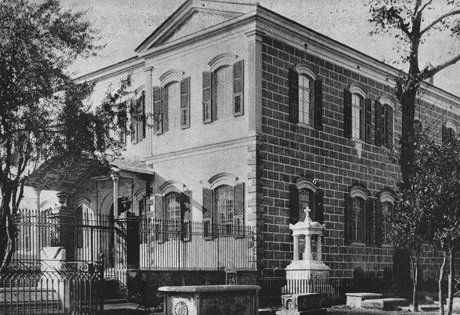 Armenian Mesropyan Boys College in Smyrna
Armenian Mesropyan Boys College in Smyrna
"Our Smyrna and Outlying cities", New York, 1960
 St. Stephanos Armenian Church in Smyrna, 16th century, a postcard
St. Stephanos Armenian Church in Smyrna, 16th century, a postcard
The collection of Orlando Calumeno
 Facade of St. Stephanos Church
Facade of St. Stephanos Church
″Our Smyrna and Outlying cities″, New York, 1960
 The altar of St. Stephanos Church in Smyrna, a postcard
The altar of St. Stephanos Church in Smyrna, a postcard
AGMI collection
 Hripsimyats Girls College
Hripsimyats Girls College
″Our Smyrna and Outlying cities″, New York, 1960
 The students of Mesropyan College, 1909
The students of Mesropyan College, 1909
"Our Smyrna and Outlying cities", New York, 1960
 Students of Garatash Vardanyan Athletic Club, 1912
Students of Garatash Vardanyan Athletic Club, 1912
"Our Smyrna and Outlying cities", New York, 1960
 A group of Armenian scouts of Smyrna, circa 1919 - 1920
A group of Armenian scouts of Smyrna, circa 1919 - 1920
"Our Smyrna and Outlying cities", New York, 1960
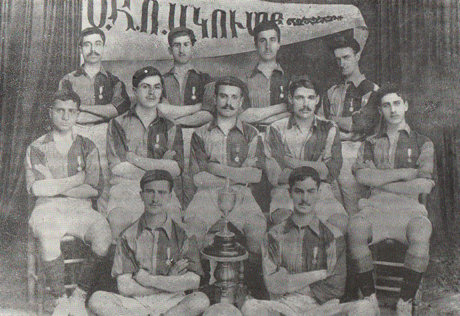 The football team of the "Armenian Hunter's Club" winner of the cup of Smyrna, 1912
The football team of the "Armenian Hunter's Club" winner of the cup of Smyrna, 1912
"Our Smyrna and Outlying cities", New York, 1960
 Students of Hripsimyats Girls College, fourth class, 1909
Students of Hripsimyats Girls College, fourth class, 1909
"Our Smyrna and Outlying cities", New York, 1960
 The first group of graduates of Hripsimyats Girls College, 1909
The first group of graduates of Hripsimyats Girls College, 1909
"Our Smyrna and Outlying cities", New York, 1960
 The football team of Garatash Vardanyan Club, 1912
The football team of Garatash Vardanyan Club, 1912
"Our Smyrna and Outlying cities", New York, 1960
 The athletic group of Mesropyan College, 1908
The athletic group of Mesropyan College, 1908
"Our Smyrna and Outlying cities", New York, 1960
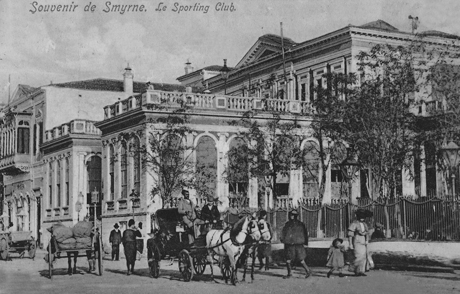 The building of Sport Club in Smyrna, a postcard
The building of Sport Club in Smyrna, a postcard
AGMI collection
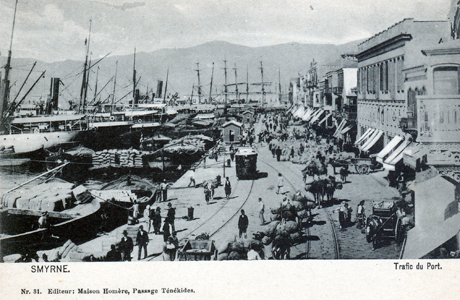 The port of Smyrna, a postcard
The port of Smyrna, a postcard
AGMI collection
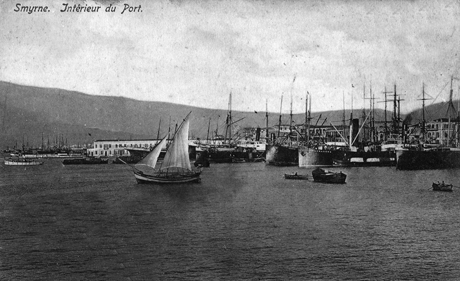 The port of Smyrna, a postcard
The port of Smyrna, a postcard
AGMI collection
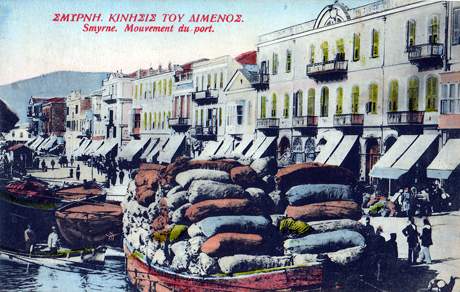 The port of Smyrna, a postcard
The port of Smyrna, a postcard
AGMI collection
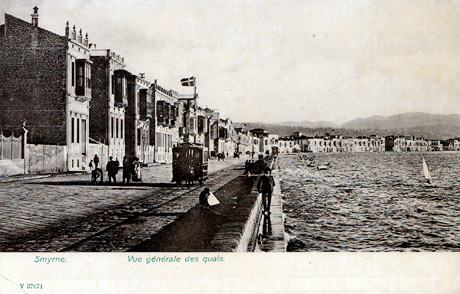 Seaside Street of Smyrna, a postcard
Seaside Street of Smyrna, a postcard
AGMI collection
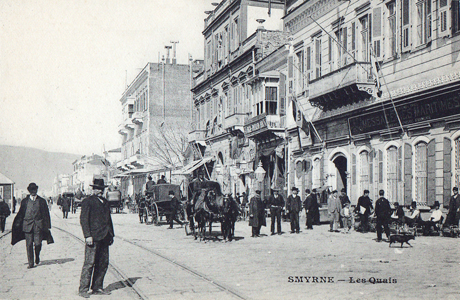 Seaside Street of Smyrna, a postcard
Seaside Street of Smyrna, a postcard
AGMI collection
 The central part of Smyrna, the end of the 19th century and the beginning of the 20th century, a postcard
The central part of Smyrna, the end of the 19th century and the beginning of the 20th century, a postcard
The collection of Orlando Calumeno
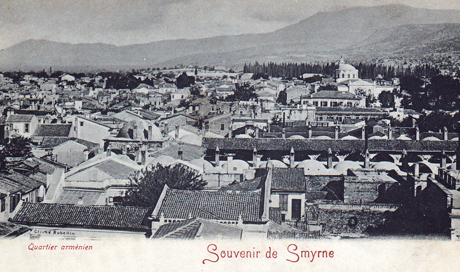 The Armenian quarter of Smyrna, early 20th centuary, a postcard
The Armenian quarter of Smyrna, early 20th centuary, a postcard
AGMI collection
 The port of Smyrna, a postcard
The port of Smyrna, a postcard
AGMI collection
 The port of Smyrna, a postcard
The port of Smyrna, a postcard
AGMI collection
 Port in Smyrna, the end of the 19th century and the beginning of the 20th century, a postcard
Port in Smyrna, the end of the 19th century and the beginning of the 20th century, a postcard
AGMI collection
 Qaratash Armenian quarter in Smyrna, the end of the 19th century and the beginning of the 20th century, a postcard
Qaratash Armenian quarter in Smyrna, the end of the 19th century and the beginning of the 20th century, a postcard
AGMI collection
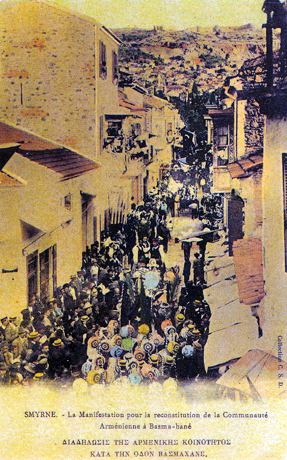 The march of Smyrna Armenian Community in Basma-Hane quarter, a postcard
The march of Smyrna Armenian Community in Basma-Hane quarter, a postcard
The collection of Orlando Calumeno
 Armenian and Greek men arrested and commented to exile, Smyrna, September, 1922
Armenian and Greek men arrested and commented to exile, Smyrna, September, 1922
AGMI collection
 The refugees of Smyrna, September, 1922
The refugees of Smyrna, September, 1922
The photo has been taken by an American sailor
AGMI collection
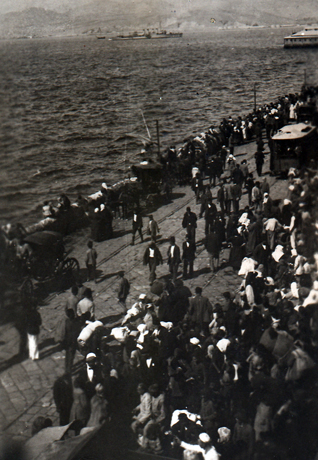 The gathering of refugees in Smyrna Port, September, 1922
The gathering of refugees in Smyrna Port, September, 1922
AGMI collection
 The burnt port of Smyrna full of refugees in panic
The burnt port of Smyrna full of refugees in panic
AGMI collection
 The refugees rescued from the Turkish massacres in the U.S. Shiping Board, September, 1922
The refugees rescued from the Turkish massacres in the U.S. Shiping Board, September, 1922
AGMI collection
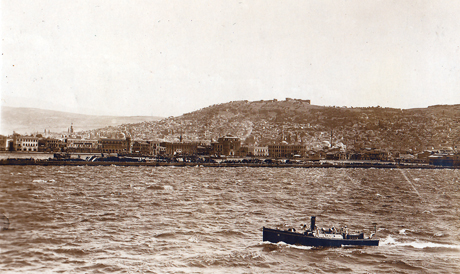 Huge crowd of Smyrna refugees gathered in the port, September, 1922
Huge crowd of Smyrna refugees gathered in the port, September, 1922
AGMI collection
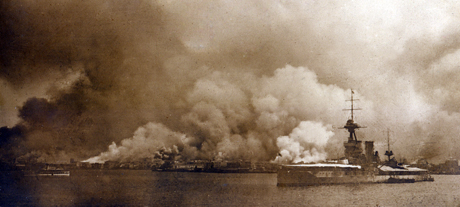 Burning Smyrna, September, 1922
Burning Smyrna, September, 1922
AGMI collection
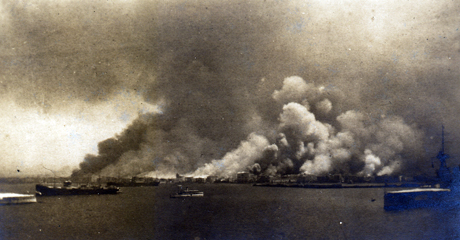 Burning Smyrna in smoke, September, 1922
Burning Smyrna in smoke, September, 1922
AGMI collection
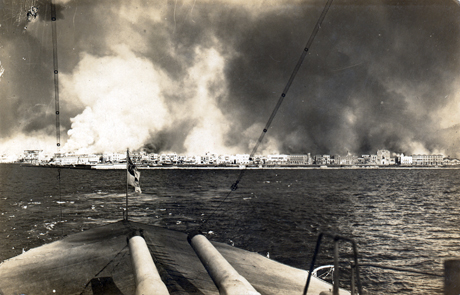 Burning Smyrna in smoke, September, 1922
Burning Smyrna in smoke, September, 1922
AGMI collection
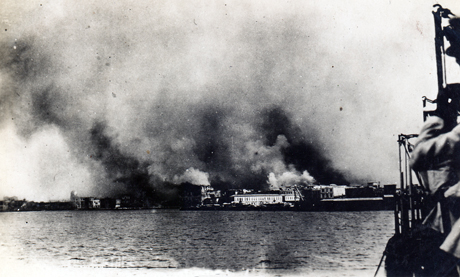 Burning Smyrna in smoke, September, 1922
Burning Smyrna in smoke, September, 1922
AGMI collection
 Fire scene of waterside buildings, September, 1922
Fire scene of waterside buildings, September, 1922
AGMI collection
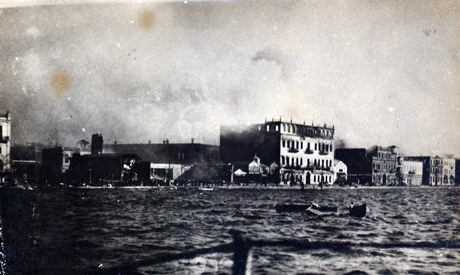 Passport Office of Smyrna destroyed by fire, September, 1922
Passport Office of Smyrna destroyed by fire, September, 1922
AGMI collection
 Passport Office of Smyrna destroyed by fire, September, 1922
Passport Office of Smyrna destroyed by fire, September, 1922
AGMI collection
 Coastal buildings of Smyrna in smoke, September, 1922
Coastal buildings of Smyrna in smoke, September, 1922
AGMI collection
 Coastal buildings of Smyrna in smoke, September, 1922
Coastal buildings of Smyrna in smoke, September, 1922
AGMI collection
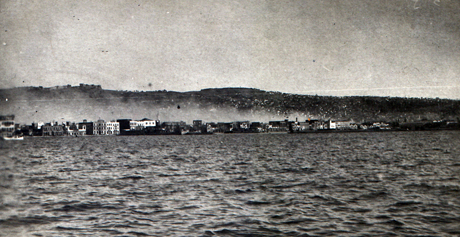 Smyrna on the fire, September, 1922
Smyrna on the fire, September, 1922
AGMI collection
 Burning Smyrna in the flames, night scene, September, 1922
Burning Smyrna in the flames, night scene, September, 1922
AGMI collection
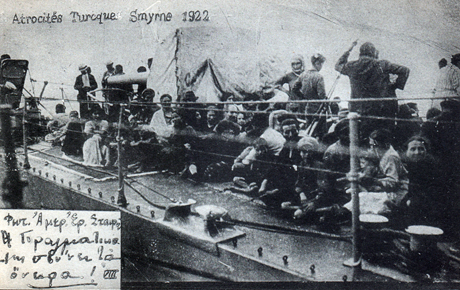 Christians of Smyrna rescued from Kamalist atrocities on the board of ship, September, 1922
Christians of Smyrna rescued from Kamalist atrocities on the board of ship, September, 1922
AGMI collection
 A victim of Smyrna massacres, September, 1922
A victim of Smyrna massacres, September, 1922
AGMI collection
 Christians fell victim to the Turkish brutalities, September, 1922
Christians fell victim to the Turkish brutalities, September, 1922
AGMI collection
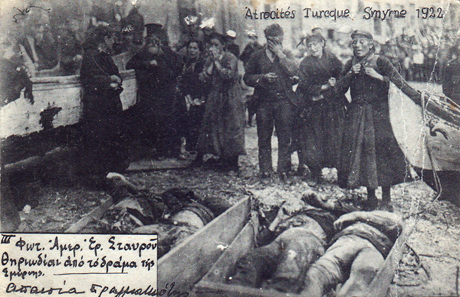 Victims of Smyrna massacres, September, 1922
Victims of Smyrna massacres, September, 1922
AGMI collection
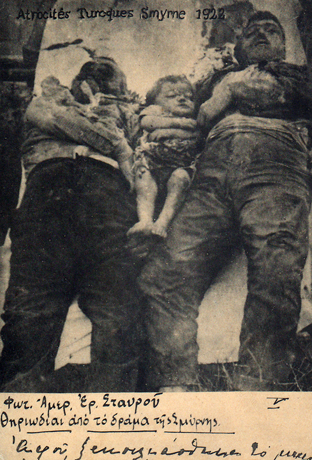 Christians fell victim to the Turkish brutalities, September, 1922
Christians fell victim to the Turkish brutalities, September, 1922
AGMI collection
 Victims of Smyrna massacres, September, 1922
Victims of Smyrna massacres, September, 1922
AGMI collection
|
|
|
DONATE |
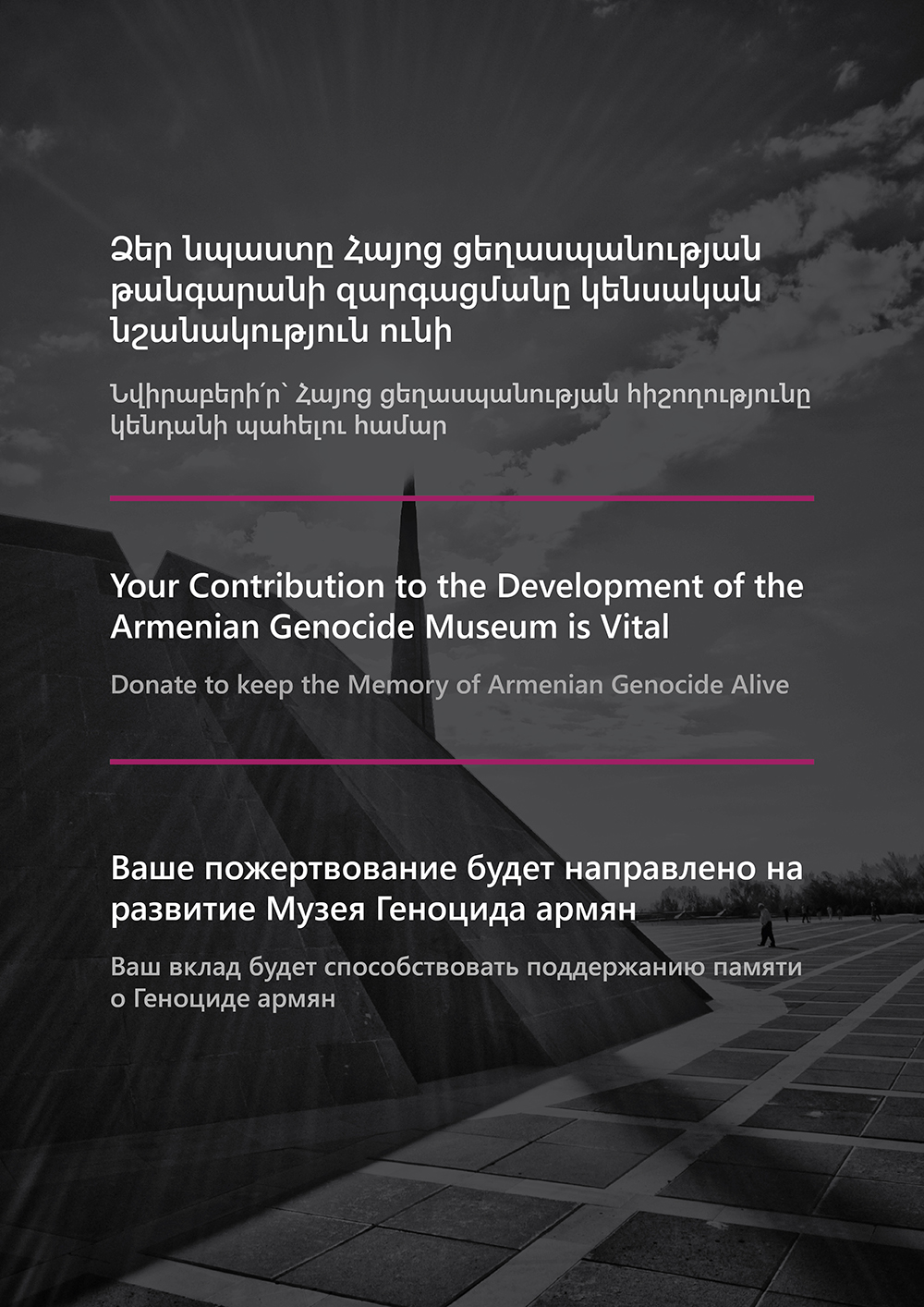
Pour garder la mémoire du génocide des Arméniens
Projets spéciaux mis en œuvre par la Fondation « Musée-institut du génocide des Arméniens »
|
LIBRAIRIE DU MIGA |
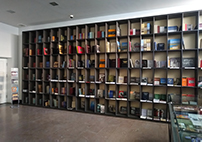
"Monde des livres" du Musée-Institut de génocide des Arméniens
|
TOUMANIAN 150 |

|
TRANSFÈRE TA MÉMOIRE |
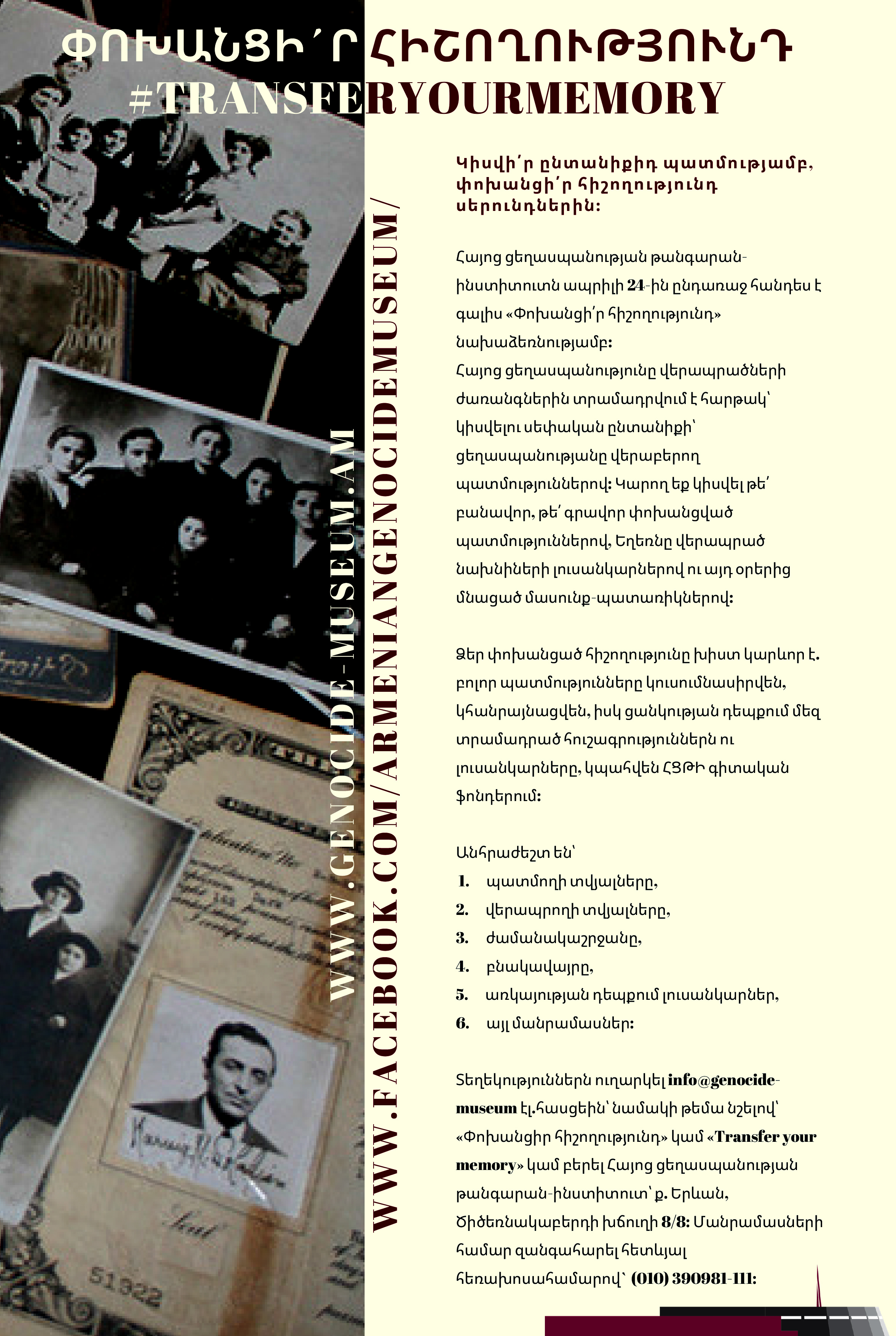
Partage l’histoire de ta famille,
transfère ta mémoire aux générations
À l’encontre du 24 avril, le Musée-Institut de Génocide des Arméniens a lancé l’initiative «Transfère ta mémoire».
|
|





